Grumman F3F: The last fighter biplane of the US Navy
The Grumman was the last USN biplane fighter indeed, but certainly not the last biplane of the Navy during WW2. Indeed, the Curtiss SBC Helldiver were still around well past 1942, although no longer frontline. It was replaced by the controversial Brewster Buffalo. So before the Wildcat, the frontline USN Fighter onboard all carriers was the Grumman F3F (which never receive its wartime name, although the civilian version was called “Gulfhawk”). In 1939 when WW2 broke out, the Royal Navy also had a biplane fighter, the Gloster sea gladiator. The Japanese had the Mitsubishi A5M, a fixed carriage monoplane, but the superlative A6M just entered service on 1st July 1940, while USN squadrons were just started replacing their F3F by the Brewster F2A. That’s a sobering thought.
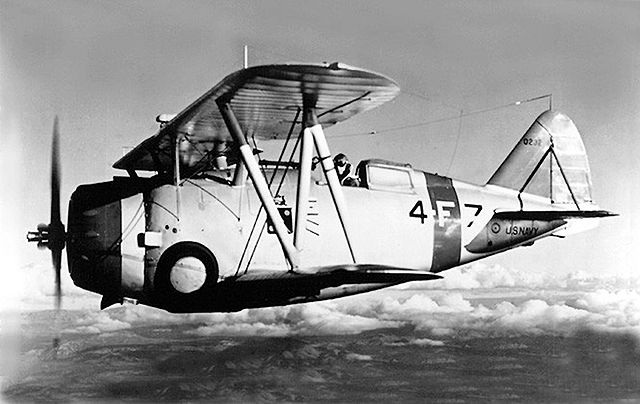
Grumman F3F BuNo 232 of VF-7, 1939
The Grumman F3F derived from the successful Grumman FF, with a retractable carriage, enclosed cockpit and landing hook. It equipped all units during the interwar, but was withdrawn shortly before December 1941, and the following F4F was developed from 1938 basically as a its monoplane version. With 147 machine built, the F3F paled in comparison to its successor (7800 planes). Some still stayed as advanced trainers for some time, before retired and scrapped in 1942 (less those which survived to this day). This will also be the occasion to review the development of USN carrier-borne fighter up to that point, from 1919 to 1934.
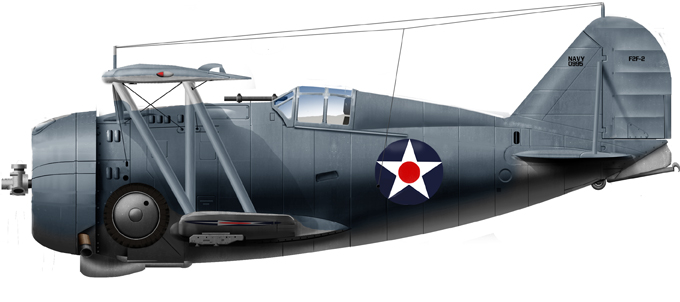
Leroy Grumman and the US Navy
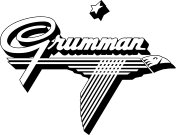
The Company
Leroy Grumman was an engineer at Loening Aircraft Engineering Corporation in 1920. The company latter was bought by Keystone Aircraft Corporation and moved to Bristol, Pennsylvania in 1929. Grumman and his partners which were all ex-Leoning Aircraft employees then started their own company in an old Cox-Klemin factory in Baldwin, Long Island (New York), registered as a business on December 6, 1929 and opening on January 2, 1930 under it’s funder’s name. Specialized in welding aluminium tubing for truck frames, Leroy Grumman soon focused on obtaining US Navy contracts. He proposed floats with a retractable landing gear, soon propelling Grumman with its FF-1 biplane into the admiralty’s favorite manufacturer.
Grumman became of course famous for its war “Cats” like the F4F, F6F, F7F and F8F as well as its torpedo bomber TBF Avenger which helped turned the tide in the pacific. Its career went on in the cold war with the same success, giving notably the navy the Panther and in the 1960s-70s the Tomcat, ending in the early 1980s with the A-6 Intruder and E-2 Hawkeye, EA-6B Prowler, before merging with Northrop.
Grumman F3F predecessors: The FF and F2F
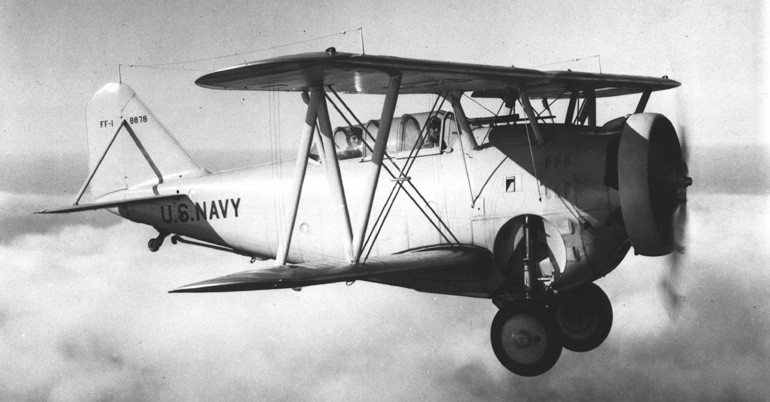
The popular “Fifi”, first success of the company and fastest fighter of the US Navy in 1933
The FF-1 was Grumman’s first complete aircraft design for the US Navy soon after the company creation. The Navy had asked Grumman to make their retractable landing gear work on their O2U-1 Scout and later if it could be retrofitted on the Boeing F4B-1 fighters. Instead Grumman famously rose to the occasion and proposed its own fighter design. The XFF-1 was built on a 22 April 1931 contract and flew in December. It was a kind of hybrid, with two-seat and enclosed cockpit, and all-metal fuselage while wings were covered with fabric. The initial 616 hp Wright R-1820-E Cyclone was replaced in production by the 750 hp (560 kW) Wright R-1820-F Cyclone allowing the record speed of 201 mph (323 km/h) in the Navy. Production was limited to single-seat 27 FF-1 in December 1932 plus 33 scouts (SF-1s) with two-seats and R-1820-84 Cyclone engine. Other versions of the Grumman F3F followed and a total of 116 as ultimately built. This was just a pinprick compared to the production of the following wartime F4F, the first to have a proper name, the first of the “cats”.
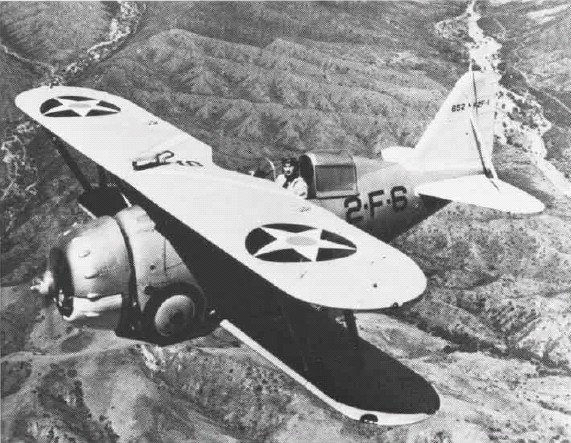
Grumman F2F-1 from VF-2B, USS Lexington
Building on this success, Grumman soon earned a contract for the next iteration, the single-seat XF2F-1 biplane fighter. This single seater was armed with two .30 caliber (7.62 mm) machine guns above the cowl and used watertight compartments in case of water landing. It first flew on 18 October 1933, with a 625 hp (466 kW) XR-1534-44 Twin Wasp Junior radial engine, proving able to reach 229 mph (369 km/h), some 22 mph (35 km/h) faster than the FF-1 and more agile. 55 were built, ordered in May 1934, the first delivered on 19 January 1935. It served with front-line squadrons from 1935 to late 1939 but was replaced by the F3F. By September 1940, the remainder were relegated to training and utility and the last was retired in 1943.
Design of the Grumman F3F
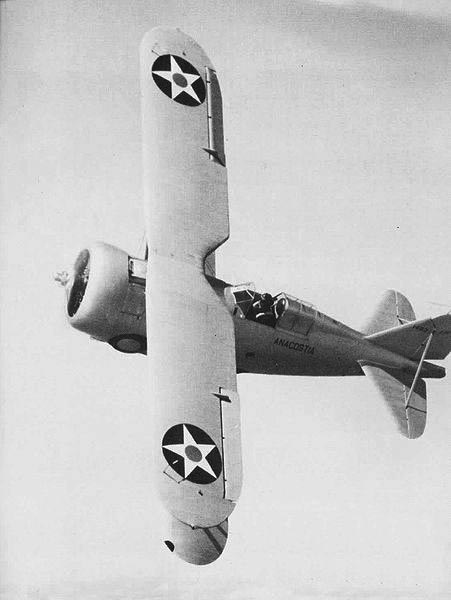
General characteristics of the Grumman F3F
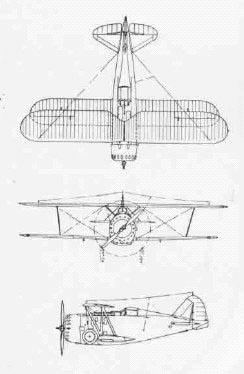 The Navy’s early experience with the F2F was good, but also revealed some issues with the design, as notified by test pilots: Tendency to instability and unfavourable spin characteristics. Forwards to Grumman, this prompted a 15 October 1934 contract between the Navy and Grumman for the delivery of an improved for an improved prototype called XF3F-1.
The Navy’s early experience with the F2F was good, but also revealed some issues with the design, as notified by test pilots: Tendency to instability and unfavourable spin characteristics. Forwards to Grumman, this prompted a 15 October 1934 contract between the Navy and Grumman for the delivery of an improved for an improved prototype called XF3F-1.
It was placed even before F2F deliveries started. But the navy also wanted a capability for ground attack while maintaining the fighter performances. The contract also required for maintenance and supplies facility, that it was powered by the very same Pratt & Whitney R-1535-72 Twin Wasp Junior engine. Now imagine you in the shoes of Leroy Grumman, trying to create this circle quadrature.
Engineers were hard at work, and soon found solutions: The fuselage was lengthened, the wing area increase to absorb the heavier load, and the wheel diameter was also reduced to allow a greater fuselage streamlining. Indeed, NACA tunnel tests showed that this prominent bulge behind the cowling was not great to obtain the best performances. Outside this, the new F3F retook practically everything from the Grumman F2F.
Tests of the three XF3F-1 (March-July 1935)
The first prototype of the Grumman F3F, BuNo. 9727, was delivered (all three had the same, since the first two crashed), flying on 20 March 1935 with Grumman’s test pilot Jimmy Collins. Her made a few flight and noted all characteristics for corrections. Just two days later, for testing bombing capabilities, he performed six dive-recovery flights in front of the factory staff. After a pause, he took off for a second serie, but at the 10th dive, while making a pullout at 8,000 ft (2,438 m), the plane apparently registered 14 g on the test equipment (info automatically relayed by radio). This load was too much to handle for the frame, and wings broke in midair.
This sent the prototype crashing, killing the test pilot Jimmy Collins. Six weeks later, a second, much strengthened prototype was tested in turn, but it too crashed on 9 May, following an unsuccessful spin recovery. Fortunately this time, the pilot had the time to bailout and survived. The second prototype was rebuilt in three weeks and flew on 20 June 1935. It passed all tests with flying colors in front of the Navy commission in charge of the program, and an order was secured for the company, for 54 F3F-1 fighters. It was signed on 24 August 1935.
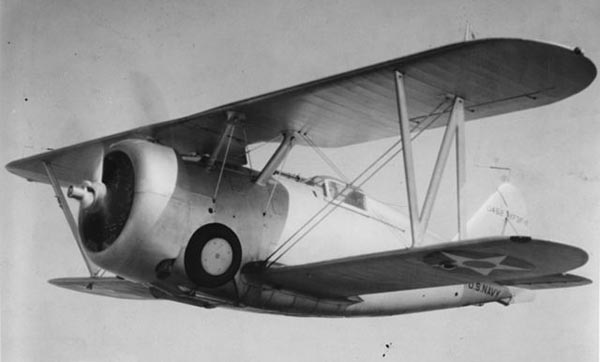
Grumman XF3F-2
Production of the Grumman F3F
F3F-1 (54):
The first production F3F-1 (BuNo 0211) was delivered on 29 January 1936, to the test group, Naval Air Station Anacostia. Further Production aircraft started squadron service in March 1936, assigned to VF-5B (USS Ranger) and VF-6B (USS Saratoga). As customary, the USMC also obtained some of these: The Marine squadron VF-4M received the last six of the batch in January 1937.
Grumman F3F-2 (81):
Meanwhile, Grumman had ideas about how to improve his bird, and for this he knew the only solution was an engine upgrade. Since he now could obtain the more powerful 950 hp (708 kW) R-1820 supercharged radial engine from the Wright company, he tasked his engineers to rework the main engine cell and front fuselage, fuel tanks, and strengthening the framing and tail. This evolved into the F3F-2 (factory designation G-19 as the F3F-3), created on private funds without any contract, so confident he was to convince the navy afterwards.
After his new model was reviewed by the Navy board, as he planned he secured an order for 81 of these, placed on 25 July 1936. It was just two days before its first test flight. The larger diameter of the engine imposed a new cowling and its appearance, so the fighter even had a more pronounced barrel-like appearance as the previous one. But its top speed jumped to 255 mph (410 km/h) at 12,000 ft (3,658 m), making the Navy quite satisfied with these figures. Meanwhile the Navy however grew more interested by a modern monoplane, the Brewster XF2A-1, an early competitor of the F3F, initially rejected. The F3F-2 production was delivered between 1937 and 1938 so when it ended, seven Navy and Marine Corps pursuit squadrons had it.
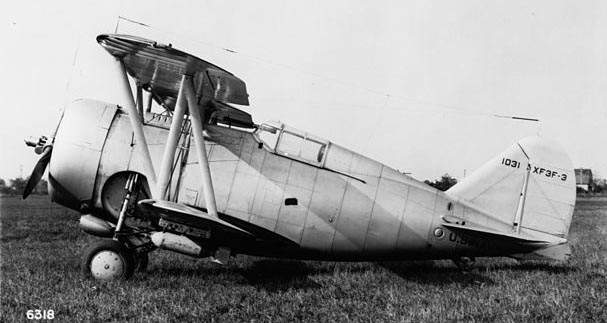
Grumman XF3F-3
Grumman F3F-3 (27):
At the same time production went on, the F3F-2 was in a campaign made with BuNo 1031 in the wind tunnel of NACA Langley’s facility (30′ x 60′ full-scale wind tunnel), led to aerodynamic improvements to follow. These changed pushed for a new prototype, called the XF3F-3. It had the same cowling but a larger-diameter propeller and reworked fuselage and skinning forward of the aft cabane strut to improve aerodynamics. It also had a curved windshield, its cowling showing a single cowl flap on either side.
The other goal was also to deflect and reduce carbon monoxide intrusion in the cockpit. The prototype was not yet even tested in front of the Navy commission that these modifications were accepted and a contract was signed on 21 June 1938. Production models differed by their redesigned forward fuselage forward of the aft cabane struts.
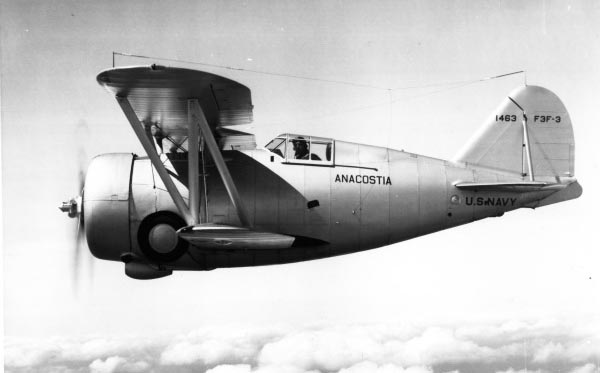
F3F-3 belonging to NAS Anacostia, Ray Wagner Collection
This time, it more a good will gesture towards Grumman than a real motivation as it only stated the delivery of 27 F3F-3s. Indeed at the same time, interest was now firmly with monoplane fighters and the Brewster F2A received generous contracts. Grumman expected this move since 1935 and already worked on a monoplane which will evolved later into the F4F. However this development was taking much longer than planned and Brewster obtained these contracts instead. Acquiring the Brewster F2A-1 in large numbers meant for the Navy promptly replacing its biplane fighters and all F3Fs were withdrawn from frontline service, at the end of 1941. That was fortunate given the competition at that time of growing tensions in Japan, after already a war raging in Europe.
Powerplant and Performances of the Grumman F3F
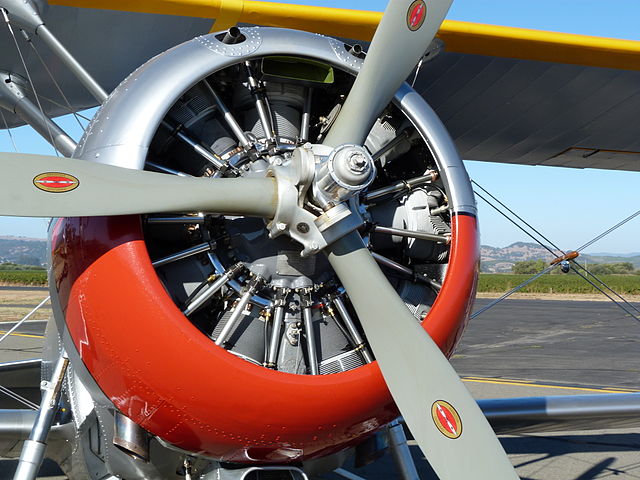
The last and best of these three version was equipped with the Wright R-1820-22 “Cyclone”, a 9-cylinder radial engine which developed 950 hp (710 kW).
Performances of the Grumman F3F:
- Maximum speed: 264 mph (425 km/h, 229 kn) at 15,250 ft (4,658 m)
- Cruise speed: 150 mph (240 km/h, 130 kn)
- Range: 980 mi (1,600 km, 850 nmi)
- Service ceiling: 33,200 ft (10,120 m)
- Rate of climb: 2,800 ft/min (14 m/s) at sea level
The F3F-3 measured 23 ft 2 in (7.06 m) for a Wingspan of 32 ft (9.75 m) and overall height of 9 ft 4 in (2.84 m). Its Wing area was 260 sq ft (24.15 m2). The engine had to lift in the air
3,285 lb (1,490 kg) of empty weight, and up to 4,795 lb (2,175 kg) at take-off with the ammo and fuel tanks full and two bombs under the wings. The power ratio was therefore of 2.28 hp/kg or 228 hp per ton.
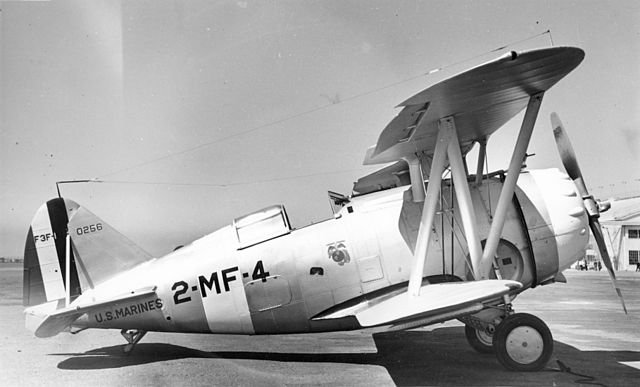
F3F-1 of the US Marines
Armament of the Grumman F3F
The F3F of all versions was equipped with the same Guns: A single 0.30 in (7.62 mm) M1919 machine gun left of the engine cowl, feed by a 500 rounds belt, and a 0.50 in (12.7 mm) M2 heavy machine gun, at the right, fed by a 200 rounds belt. As specified in contract, it was also designed to carry two 116 lb (52.6 kg) Mk IV bombs strapped under each wing. Delivery was either in dive or strafing. Apart for exercises, these were rarely seen.
The Grumman F3F in service
As said, the F3F was deployed in all frontline fighter squadrons of the USN, and used as fighter primarily, as using it as a dive bomber was a risky choice even though it was stated on contract. At that time, only the Curtiss Helldiver biplane was proven capable of this task without much risks. F3F equipped all USN fleet carriers at the time, the two Lexington, USS Ranger, the two Yorktown, and USS Wasp, from 1936 to 1941: The VF-2B, VF-3B, VF-5B, VF-6B, VF-2, VF-3, VF-4, VF-5, VF-6, VF-71 and VF-72.
For six years, they created an entire generation of biplane fighter pilots, which called it the “flying barrel”. Even before the war in Europe, the Navy moved towards monoplanes, and the Buffalo started to replace the F3F already in 1939, while from 1940 until the last frontline units (land based) transitioned throughout 1941. 117 were still assigned to naval bases like NAS Miami and NAS Corpus Christi, used mainly for training and utility well after Pearl Harbor. They equipped the USMC VF-4M, VMF-1/2, VMF-211 and VMJ-1. They were still around by December 1943, though considered “limited standard” in 1941 already. These land-based models made mostly short flights as part of the “neutrality patrols” from Miami in 1941, but were kept for training afterwards.

Training aircraft, including the F3F at Naval Air Station Miami, circa 1942
Army use: For training, the Army also ordered two models, the G-32 and G-32A (Army designation UC-103/UC-103A) both two-seats versions, used as ferry-pilot trainers.
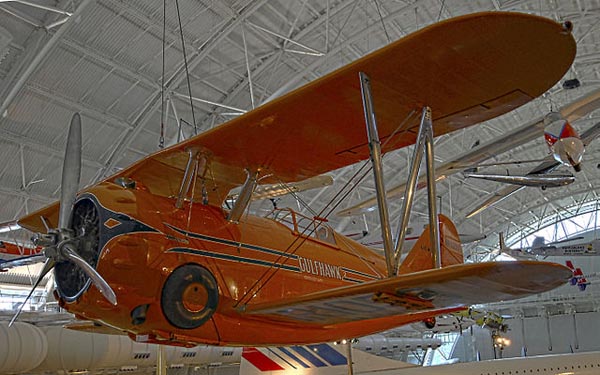
Gulfhawk II
Civilian use:
A civilian aerobatic two-seat variant was also developed early on in 1936, called G-22A “Gulfhawk II”. It was flown by Major Alfred “Al” Williams (ret.), which performed advertising stunts and took the head of Gulf Oil’s aviation department. It was in practice an hybrid F2F/F3F powered by a 1,000 hp (750 kW) Wright R-1820 Cyclone. The G-22 Gulfhawk II could now be seen at the National Air Museum since October 1948. The improved G-32 Gulfhawk III (G-32A) was a two-seat variant of the F3F.
It was powered by the same 1,000 hp (750 kW) Wright R-1820 Cyclone and two were built, NC1051 and NC1326. The first was for Alford Williams, the second was retained by Grumman as fast executive transport aircraft. Both incorporated landing flaps into the lower surface of the upper wing, which impressed the USAAF.
This led to the last evolution of the type, the UC-103 designed in 1942 after William’s G-32 Gulfhawk III crashed in Florida. The G-32A survived until 1971 but crashed after an inflight fire. As of today, there are five surviving planes and one replica, some in flying conditions, all in the US.
The F3F also figured in Warner Bros.’s 1939 Wings of the Navy, the 1940 film Flight “Command”, starring Robert Taylor, and several models were seen in the 1941 Technicolor film “Dive Bomber”.
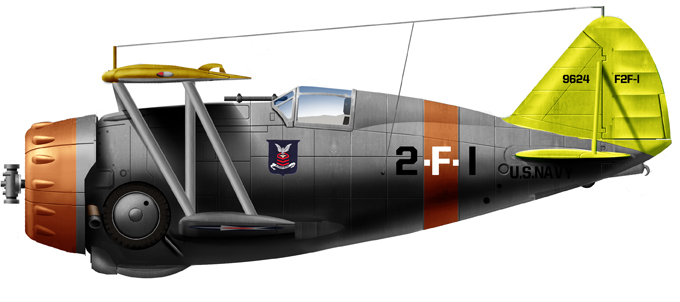
F3F-1 CV-2, USS Lexington, 1937, one of the first units deploying the F3F.
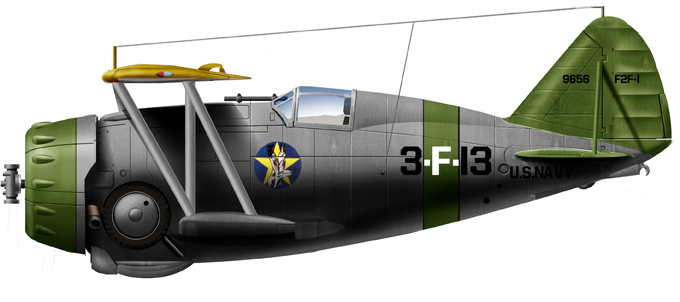
F3F-1 of VF-4, USS Ranger, 1937
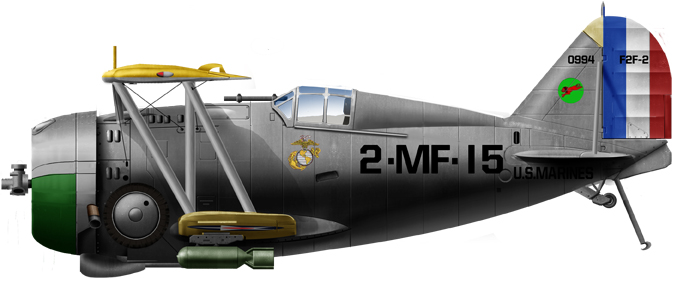
F3F-2, VMF-2, VMF-2 MCAS San Diego 1939
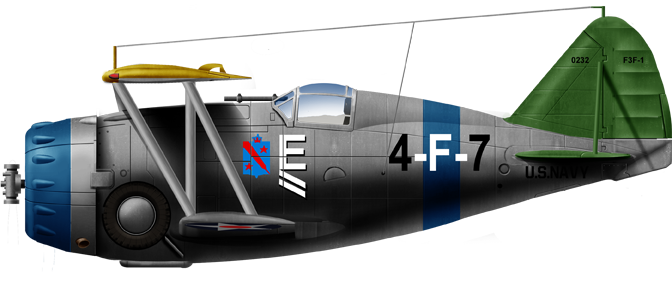
Grumman F3F-3, USS Ranger 1940
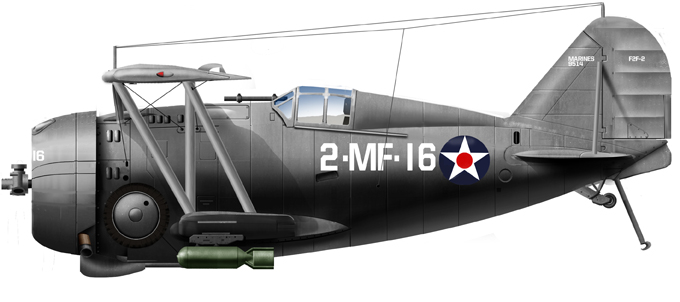
F3F-2 USMC VMF-2 MCAS San Diego in late 1941

F3F-2 used as trainer by the Navy in 1942. Classic navy blue livery, white underbelly. The last were retired from early 1943, gradually replaced by the Wildcat.
Photos
Src/Read more about the Grumman F3F:
Cacutt, Len. Grumman Single-Seat Biplane Fighters. London: Marshall Cavendish, 1989.
Crosby, Francis. Fighter Aircraft. London: Lorenz Books, 2002.
Dann, Richard S. (USN, LCDR). Grumman Biplane Fighters in action. Aircraft In Action 150. Carrollton, Texas: Squadron/Signal Publications, 1996.
Orriss, Bruce. When Hollywood Ruled the Skies: The Aviation Film Classics of World War II. Hawthorne, California: Aero Associates Inc., 1984.
http://aerofiles.com/_grum.html
https://www.historynet.com/f3f-biplane-barrels-back.htm
http://aerialvisuals.ca/AirframeDossier.php?Serial=11773
https://www.fantasyofflight.com/collection/aircraft/currently-not-showing-in-museum/wwii/1938-grumman-f3f-2/
https://airandspace.si.edu/collection-objects/grumman-g-22-gulfhawk-ii/nasm_A19490059000
https://planesandpilotsofww2.webs.com/Grumman3.html
http://www.vf31.com/aircraft/f3f.html
en.wikipedia.org/wiki/Grumman_F3F
commons.wikimedia.org/wiki/Category:Grumman_F3F
The Models Corner:
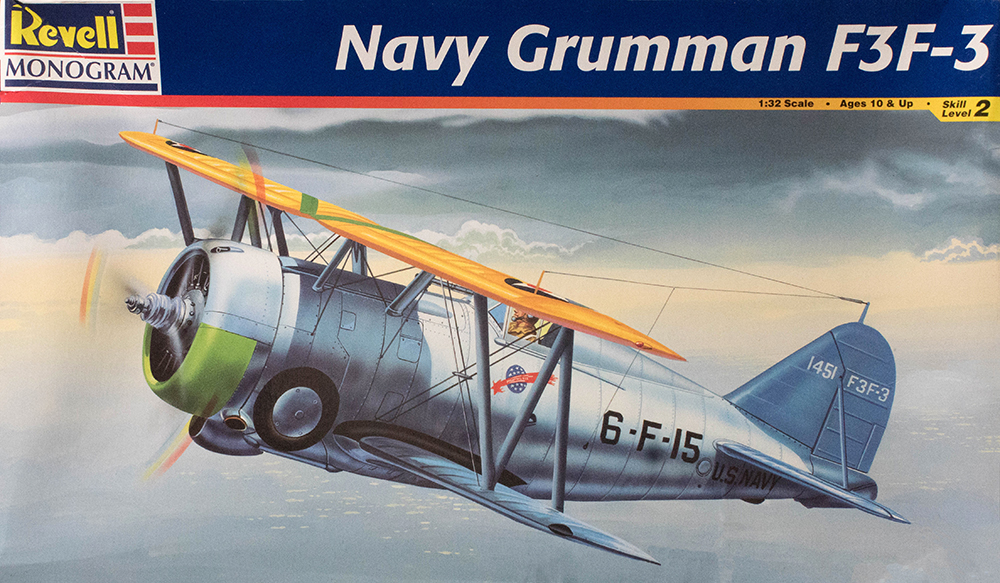
Accurate Miniatures 3413 1/48 Grumman F3F-1
Accurate Miniatures 3414 1/48 Grumman F3F-2
Monogram 5835 1/32 Grumman F3F-3



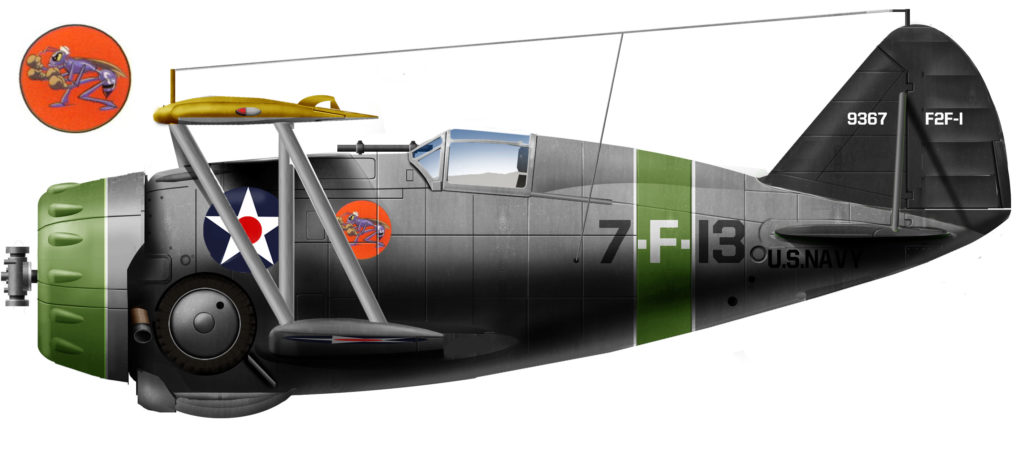
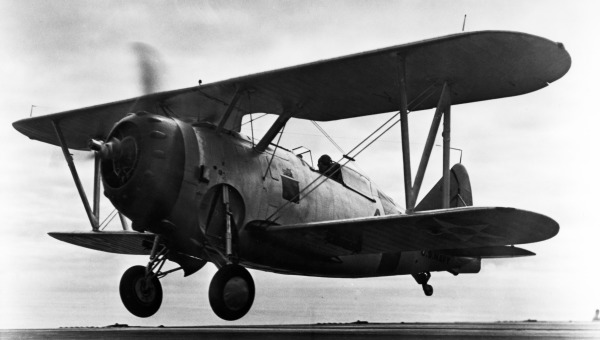
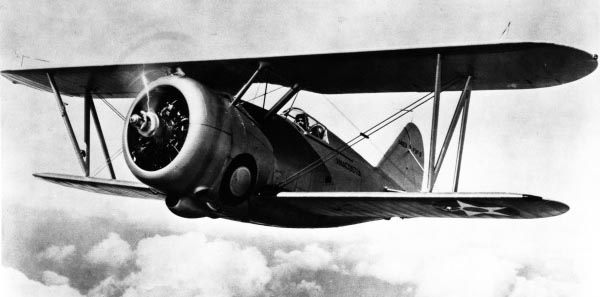
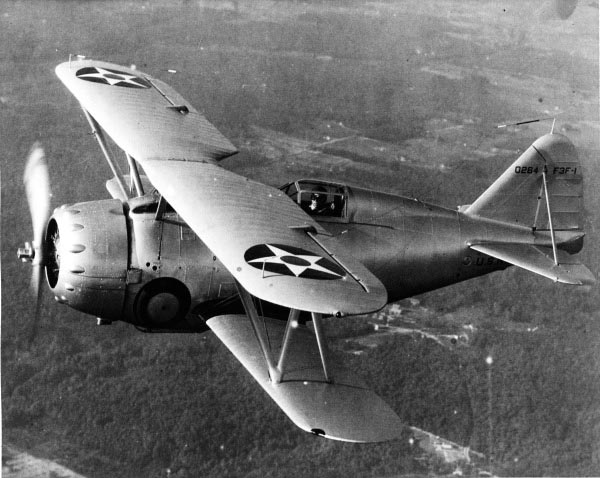

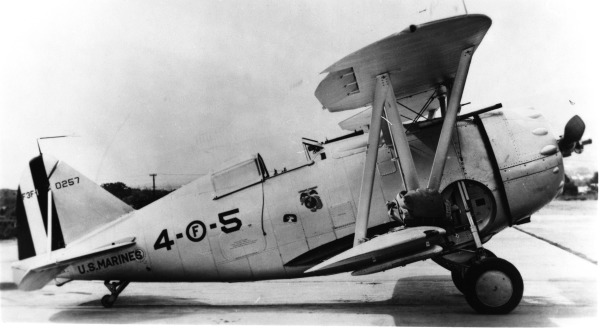


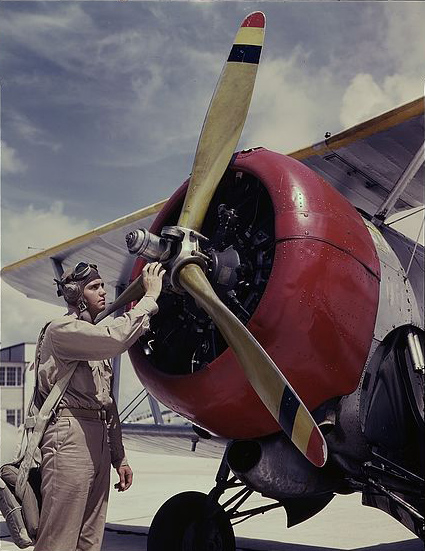
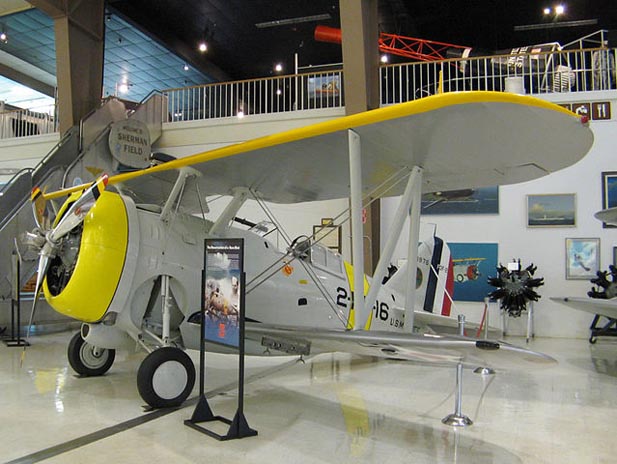
 Latest Facebook Entry -
Latest Facebook Entry -  X(Tweeter) Naval Encyclopedia's deck archive
X(Tweeter) Naval Encyclopedia's deck archive Instagram (@navalencyc)
Instagram (@navalencyc)





 French Navy
French Navy Royal Navy
Royal Navy Russian Navy
Russian Navy Armada Espanola
Armada Espanola Austrian Navy
Austrian Navy K.u.K. Kriegsmarine
K.u.K. Kriegsmarine Dansk Marine
Dansk Marine Nautiko Hellenon
Nautiko Hellenon Koninklije Marine 1870
Koninklije Marine 1870 Marinha do Brasil
Marinha do Brasil Osmanlı Donanması
Osmanlı Donanması Marina Do Peru
Marina Do Peru Marinha do Portugal
Marinha do Portugal Regia Marina 1870
Regia Marina 1870 Nihhon Kaigun 1870
Nihhon Kaigun 1870 Preußische Marine 1870
Preußische Marine 1870 Russkiy Flot 1870
Russkiy Flot 1870 Svenska marinen
Svenska marinen Søværnet
Søværnet Union Navy
Union Navy Confederate Navy
Confederate Navy Armada de Argentina
Armada de Argentina Imperial Chinese Navy
Imperial Chinese Navy Marinha do Portugal
Marinha do Portugal Mexico
Mexico Kaiserliche Marine
Kaiserliche Marine 1898 US Navy
1898 US Navy Sovietskiy Flot
Sovietskiy Flot Royal Canadian Navy
Royal Canadian Navy Royal Australian Navy
Royal Australian Navy RNZN Fleet
RNZN Fleet Chinese Navy 1937
Chinese Navy 1937 Kriegsmarine
Kriegsmarine Chilean Navy
Chilean Navy Danish Navy
Danish Navy Finnish Navy
Finnish Navy Hellenic Navy
Hellenic Navy Polish Navy
Polish Navy Romanian Navy
Romanian Navy Turkish Navy
Turkish Navy Royal Yugoslav Navy
Royal Yugoslav Navy Royal Thai Navy
Royal Thai Navy Minor Navies
Minor Navies Albania
Albania Austria
Austria Belgium
Belgium Columbia
Columbia Costa Rica
Costa Rica Cuba
Cuba Czechoslovakia
Czechoslovakia Dominican Republic
Dominican Republic Haiti
Haiti Hungary
Hungary Honduras
Honduras Estonia
Estonia Iceland
Iceland Eire
Eire Equador
Equador Iran
Iran Iraq
Iraq Latvia
Latvia Liberia
Liberia Lithuania
Lithuania Mandchukuo
Mandchukuo Morocco
Morocco Nicaragua
Nicaragua Persia
Persia San Salvador
San Salvador Sarawak
Sarawak Uruguay
Uruguay Venezuela
Venezuela Zanzibar
Zanzibar Warsaw Pact Navies
Warsaw Pact Navies Bulgaria
Bulgaria Hungary
Hungary

 Bundesmarine
Bundesmarine Dutch Navy
Dutch Navy Hellenic Navy
Hellenic Navy Marina Militare
Marina Militare Yugoslav Navy
Yugoslav Navy Chinese Navy
Chinese Navy Indian Navy
Indian Navy Indonesian Navy
Indonesian Navy JMSDF
JMSDF North Korean Navy
North Korean Navy Pakistani Navy
Pakistani Navy Philippines Navy
Philippines Navy ROKN
ROKN Rep. of Singapore Navy
Rep. of Singapore Navy Taiwanese Navy
Taiwanese Navy IDF Navy
IDF Navy Saudi Navy
Saudi Navy Royal New Zealand Navy
Royal New Zealand Navy Egyptian Navy
Egyptian Navy South African Navy
South African Navy






























 Ukrainian Navy
Ukrainian Navy dbodesign
dbodesign